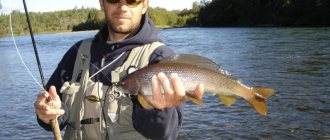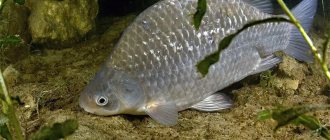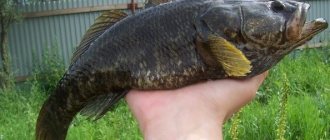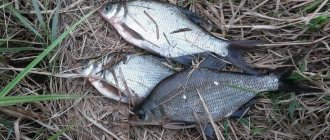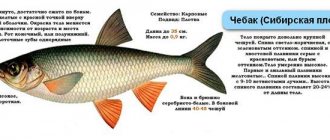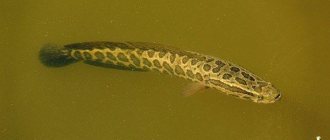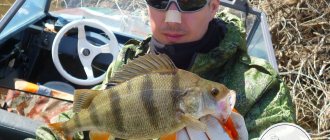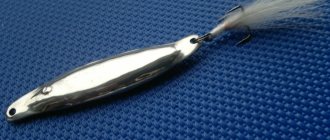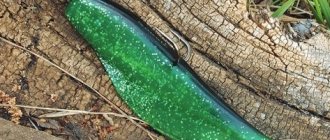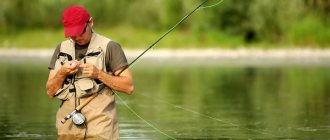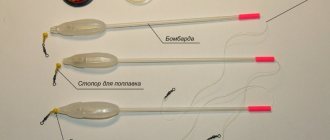Yuri 09.10.2020 396
Catching a large trophy asp is the dream of any fisherman. The popularity of this beautiful, strong and cautious fish in Astrakhan is quite high. Not every spinning angler knows the intricacies of catching this predator, and only the most experienced know their habits, habitats and food preferences. Such knowledge and properly selected gear ensure fun asp fishing. Today we will talk about flies - how to use a front sight with a bombard and castmaster.
General rules
The asp is unpredictable and very careful, so such a curiosity will clearly be too much for beginners.
When hunting this predator you need to adhere to some rules:
- Proper camouflage and maintaining silence are the key to a big catch;
- You need to cast further than the place marked by the eye with the expectation that you will still need to bring the bait;
- The asp is very sensitive and can react to a strong splash , so it is necessary to hold the line before the bait touches the water (this will additionally eliminate the possibility of the float and bait intersecting);
- If the picky fish does not grab the bait instantly, then we continue to slowly bring it in, patiently up to a distance of 10 m from the coastline - do you remember that the asp is an unpredictable fish?
Sometimes the predator makes a strike, jumps above the surface and allows you to enjoy the beauty of its silvery scales, only to immediately dive back spectacularly. The fishermen share with admiration that such a moment is clearly worth the fatigue and all the time spent waiting.
It also happens that the line sags and then you need to immediately hook it with a wide stroke, otherwise the asp will break loose and never pay attention to such bait again.
Asp is a real fighter, but as soon as you manage to bring him to the surface, he no longer offers any resistance.
Tackle
- The most popular fishing method is spinning, which can be used to catch this cautious predator very effectively.
- Not less often, asps are caught using float gear. In this case, a sufficient supply of fishing line is necessary, taking into account the fact that the cautious predator has to be fished out over long distances, counting the playful movement of the bait.
- Bombarda, despite its effectiveness, is not such a common method of fishing. For many fishermen, this option is an innovation, and they prefer the proven “grandfather” methods.
The asp quickly gets used to the monotony, so no matter how tempting the spinner is, he can swim past indifferently.
This is where the beauty of catching this fastidious fish with a bombard is revealed. The advantage of this type of gear is the variety of floats, which plays into the hands of catching such a selective predator as asp.
The load in them can be immersed to a depth convenient for the fisherman and attract the desired fish.
It is necessary to collect gear:
- Fishing line (no more than 0.2-0.3 mm);
- Streamer;
- The leash is no longer than 2 m, no more than 0.18 mm;
- Bombard with a long antenna;
- Carabiners with swivels;
- Bead;
- Rod (size depending on whether you will fish from a boat or the shore) 2.5-3.0 m with 30-55 g of dough;
- Durable reel with adjustable brake.
Fly fishing gear
The modern fishing world is rich in a wide variety of different gear. There are several possible options for fly fishing in this list:
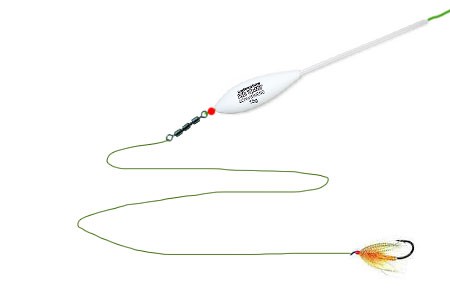
Fly fishing gear, which consists of a rod, reel and line. It is the oldest device for fly fishing. Fly fishing is a broad and constant creativity and experimentation of fishing with light bait that imitates an insect. The tackle is particularly delicate and requires a lot of experience and skill from the fisherman.- Ship. This tackle is a wooden device to which a fishing line with leashes is attached. The fisherman is on the shore, and the boat floats downstream. Flies on leashes cover a large area when rafting. This tackle shows excellent results on asp, perch and chub.
- Spinning tackle with a bombard. A sbirulino or bombard float allows you to cast a spinning rod over a very long distance. To equip it, first put on a float, then a few swivels and finally a leash with a fly. Considering the positive buoyancy of the float, the bait does not sink, but is carried in the upper layer of the reservoir. This tackle is suitable for catching any type of fish listed above.
- Spinning tackle with barbs. This tackle is designed for catching perch. A sinker is attached to the end of the rig, which will stretch along the bottom. And above the load, leashes with flies are tied at equal distances.
- A tug is a tackle for catching chub, which consists of two spinning rods connected to each other by a fishing line. When fishing with this gear, anglers stand on different banks of the reservoir, and leashes with flies are tied at the level of the middle of the river. By twitching the spinning rods, the game is played with flies. Considering the fact that anglers are far from where the bait is playing, this tackle is great for catching the most wary fish species.
This fish is often caught by experienced fishermen using spinning rods. For beginners, this kind of mining with such equipment, as a rule, is not up to the task.
In this case, the optimal length of the rod should be three meters or more, so that there is a possibility of making long and accurate casts. The reel must be of high quality, spacious, with an impressive gear ratio.
Experienced fishermen recommend using a braided line with a diameter of eighteen millimeters for monofilament tackle for asp fishing. Asp are most often caught using a spinning rod, since in this fishing the strength characteristics of the rod, the accuracy of frequent casts and high-speed fishing are important.
Bait
Some experienced fishermen make the bait themselves, based on their own experience or following the advice of more competent colleagues. The key point in catching asp using the presented method is to understand the importance of the fact that the bait itself should be much lighter than a bombard.
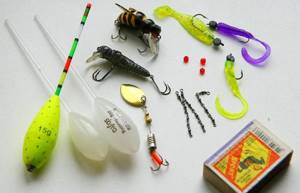
If the bait is heavy, then you will never be able to cast optimally far to catch such a rare scaly fish.
It is acceptable to use the following baits:
- Frog;
- Front sights;
- Live bait (fry, worms, larvae);
- Jigs.
The asp loves warm water; it will swim closer to the surface, so the fisherman’s profit should be appropriate.
Casting technique with a bombard
- The basic principle of the technique is smoothness , with the exception of acceleration during the cast itself;
- You need to cast vertically or with a slight side slope;
- Having looked around and placed the rig behind your back, you can lift the rod for convenience, then, making sure that there is no possibility of catching on something when casting, turn your head towards the intended location and smoothly cast;
- If natural vegetation restricts the fisherman’s movements, then you should not move the equipment behind your back , but you need to grab the tee, move the rod back, release the bait and cast at the moment of the strongest deviation of the equipment.
Fly fishing technique

Any fishing using flies begins with searching for promising places for a certain type of fish, which is the object of fishing with this type of bait. Equally important is the correct choice of the necessary bait, which depends on weather or seasonal conditions.
Fishing with flies can be divided into the following components:
- Casting With the tackle you need to cast the fly further than the promising place. It will be better if it is located in the middle of the wiring. The bait can be drifted downstream or directed towards you.
- Playing along with the bait. When retrieving, it is allowed to hold, pull up or sink the cord, as well as raise or lower the rod.
- Hooking and landing. After the bite, immediate hooking and retrieving should follow. When fishing, it is necessary to outline places where fish might be caught: dense vegetation or snags.
The use of flies helps the angler come out with a catch in situations where other baits are useless. Therefore, you should always have flies in your assortment, since such a set of baits will help save even the most hopeless fishing in the spring or summer.
Catching asp using a bombard with a fly
- As soon as the right place for the asp to roam is chosen, you should see peculiar splashes: the predator hunts the fry with the assertiveness of a fighter;
- It is necessary to stop the boat at a distance of at least 30-40m, so as not to accidentally scare the asp;
- The tackle with the fly needs to be thrown into these splashes, and retrieving should be done at the moment when the fly has practically dived onto the surface of the water;
- You need to wind the line, pulling the reel towards you, at the moment when the fly has already landed - the asp sees the moving bait and, in the heat of excitement, grabs it.
- The asp attacks actively, you will feel a kind of blow, and your feedback to this disgrace should be instinct: a sharp hook;
Note: In spring, the predator behaves somewhat differently than in summer. The tactics of its behavior change, therefore, fishermen notice the peculiarities of fishing in the spring. The asp becomes less assertive, no longer suppresses small fish, but hides in secluded places, on the boundaries of gyres, where there is a reverse current. It brings food, and the predator lazily dines.
The asp loses most of its vigilance and navigates in muddy water only by sensation, so fishing becomes much easier. You can slack off in the camouflage aspects and use wobblers - the asp will certainly fall for it and be on your hook.
Keep in mind that the predator may miss the first time, so be a little patient and you will be sure that he will attack again to get the escaped prey.
Catching different types of fish
Since the fly is a bait that the fish constantly swallows, prepare a sufficient number of artificial insects. Experienced fishermen always have a large supply of different flies in stock. Usually 15-20 pieces are enough for one fishing trip, it depends on the intensity of the bite and the time spent on the pond.
Grayling
The grayling fishing season begins in the spring, at the end of May. The bait is carried out in two ways: either the fly floats freely with the flow or, conversely, it is pulled towards the shore. These movements of the fly imitate the behavior of insects in early summer. At this time of year, fishing is better with wet flies, as there are very few insects flying on the surface.
The photo shows flies that are good for catching grayling:
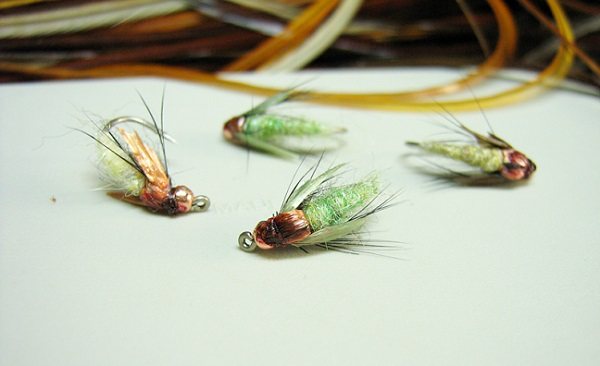
These flies are used to catch grayling
Often, when fishing for grayling, a dry fly is tied next to a wet one. This tandem allows you to see the bite. A dry fly, with its bouncing, will show you a bite, which is difficult to determine when a wet fly floats freely with the current.
In general, biting grayling is a special topic for fisherman. In order to see it, fishermen resort to various tricks. For example, they make a signal winding at the end of the cord with white thread or put a plastic tube on it. Those who are just starting to master the basics of fishing will need to learn how to identify grayling bites.
With the onset of summer comes the time for dry flies. A massive emergence of mayflies and other insects begins. If you managed to catch this moment, then the catch will be excellent. Fishing with dry bait will only be advisable if there are flying insects and a certain air temperature. Below 10 degrees, insects stop flying. Dry small flies should be set high on the hook and have a brush.
Grayling prefer softer flies with yellow or red bellies. Nymphs in muddy water are clearly visible to fish if they are pink or orange. But in clear water such bright colors will only scare away the grayling. If you haven’t yet picked up your catchy fly, then you need to remember that grayling still loves small flies.
The slower the current, the more similar the fly should be to its prototype. Moreover, we must not forget that the fish looks at the bait from the water, so it is especially important that the silhouette is as realistic as possible. Especially in fast water, the fish does not look closely at the bait; it manages to see the silhouette. In order to eliminate distortion, you need to choose an artificial front sight that is one size smaller than it actually is.
It is very difficult to choose the horizon for catching grayling with a nymph, since they fish with a wet fly underwater and it is not known where the insects are. Perhaps grayling collects larvae from stones or catches insects in the middle horizons.
In the video, watch how grayling is caught with a fly:
Asp
Asp are actively caught with a fly beginning in mid-summer. For asp, the most catchy bait is considered to be the wabik, invented many years ago. White feathers or fur are wound on a double or triple hook with thread. In order for this wabik to better float on the water, a foam ball is attached to it.
They catch asps not only with a wabik, but also with wet flies or streamers. The fishing technique is aimed at not spooking the asp. Therefore, they throw the tackle away from the place where it was found and lead it with jerks and twitches. In this case, one fly should be in the upper layer, and the second should jump along the water surface.
In the shallows the bait speed is faster than in the depths. To catch asp, the fly can be on the spoon itself or on a leash. You can catch two predators at once with a group of flies. This method of fishing is called "beard". This method is used to catch asp in the bottom layers, where it goes in spring, autumn and sometimes in summer. The larger the fly, the larger the specimen can bite.
Favorite colors of flies are pink, blue, white, yellow and, depending on the time of year, black. The game of the bait, the imitation of a living prototype, is very important. When fly fishing, you can catch a good asp on a grasshopper. If you are fishing with a streamer, then after casting you wait until it sinks to the bottom, then you lead the bait, at the same time choosing a little fishing line. Somewhere at a depth of up to 2 meters, the asp begins to peck at the streamer.
Since the asp has weak lips and can jump high out of the water when landing, it is necessary to prevent him from falling off. Do not make sudden movements or loosen the line.
In the video, the asp was caught using a spoon and flies:
Rudd
Catching fish such as rudd involves the use of effective bombard gear, also called sbirulino. This tackle combines the best features of fly fishing and spinning. Bombarda is a very catchy tackle, which also uses a fly.
In order to assemble the bombard you will need a rod with guides. The bombard is a special float, inside of which there is a tube through which the main fishing line is pulled. A bead is attached as a shock absorber after the float, then a leash is attached using a swivel. The role of bait is played by the fly, which clings to the bombard.
If it is necessary to sink the bait, a sinker is put on the bombard. Bombarda is distinguished by weight. Long-distance fishing is carried out with a bombard weighing up to 60 grams. Close casts are made with a light bombard from 1 to 5 grams. It is for catching rudd that connecting a light bombard with a fly will be the right decision.
For rudd, the most important thing is to find the right color of bait. It is better to choose flies that are white, yellow or gray. In mid-summer, rudd are well caught on streamers. If you are fishing in a place where there is a lot of algae, then the green color will appeal to this fish.
A splash on the water will show you the presence of a rudd; the bombard should be sent with an accurate throw a little further than this place. Then, reeling in the fishing line, lead the bait.
Another way to catch rudd is by tying several flies. As soon as the first fish grabs the bait, stop the rod and the lively rudd will begin to grab the free flies.
In the video they catch a rudd using a bombard with several flies:
Chub
Chub are caught using a dry fly. As soon as a fly falls to the surface in nature, the fish immediately shows interest in it. The main thing is that the bait gets into the chub’s field of vision. But this behavior of the chub manifests itself in shallow water.
At depth, he behaves more carefully, accompanies the fly for some time, probably first looking to see who fell on the water. If the fish does not take the bait for a long time, then you should change the fly and offer another insect.
To catch chub with a dry fly, there is a requirement - a completely closed hook. If, when fishing for a chub, the fly comes out of its mouth, this means it has a lot of feathers. You need to thin them out with scissors.
You can catch chub with a dry fly during the day and evening, even after sunset.
Watch the video on how to catch a chub with a fly:
Dace
If we talk about dace, then its main preferences are insects that fall on the water, i.e. dry flies. Catching dace with a wet fly is quite rare. I especially want to catch large-sized dace with fly fishing.
Dace is a shy fish, so you need to be careful with it and try not to get caught in its field of vision. When you lift the line, try to guide it away from the fish so that the splashes when lifting the fly do not frighten the dace. Large, dark flies tied on fairly large hooks are more suitable for catching dace.
It has been noticed that dace are interested in flies with imitation legs extended towards the bend of the hook. To successfully catch dace, you need a thin leash. You need to throw it so that he doesn’t notice this leash. It is better to cast the fly to the side or in front of the fish. The fish may follow your bait for some time.
Another secret to fly fishing for dace is that the bait must be dry. For this purpose, there are special hydrophilic liquids that are used to coat the fly before fishing.
Salmon
Look at the video of how they catch salmon with a fly, this strong fish that desperately resists:
Perch
They also successfully catch perch with flies. You can use fly fishing or spinning, together with a Sbirulino float. This kind of perch fishing gives good results, especially if you put not one, but two flies.
For perch fishing, flies with stiffer hairs are suitable; they wear out less. If you catch perch with a bombard, then you need to increase the length of the leader to 1.5 meters and plant a bright wet fly - a nymph. To prevent the front sight from twisting, you need to install two quarter swivels in series. Try a black and white or black and red fly for bass.
In winter fishing for perch, the combination of a fly and a balance beam has proven well.
Look at the video of what streamers look like for catching perch, pike, pike perch:
